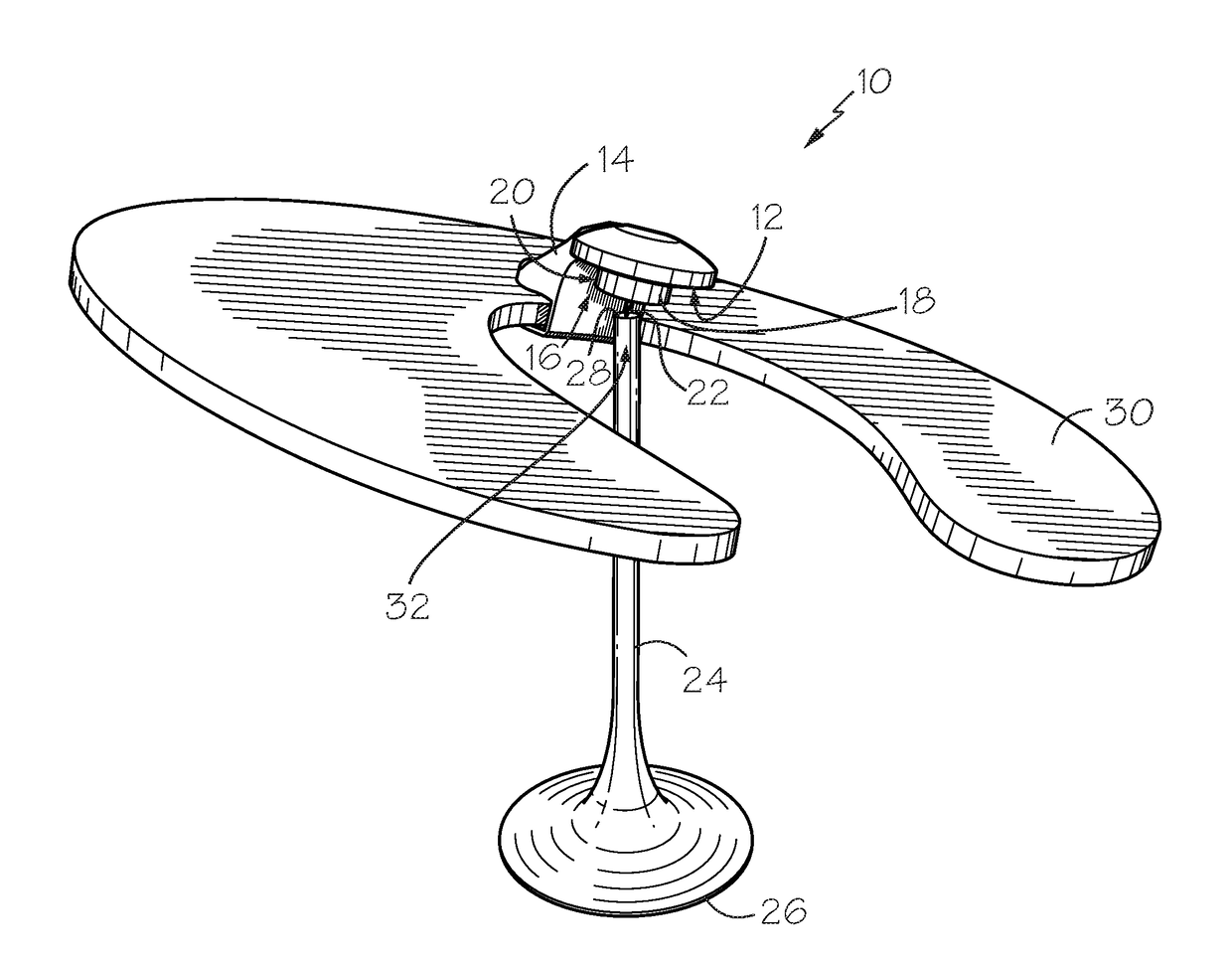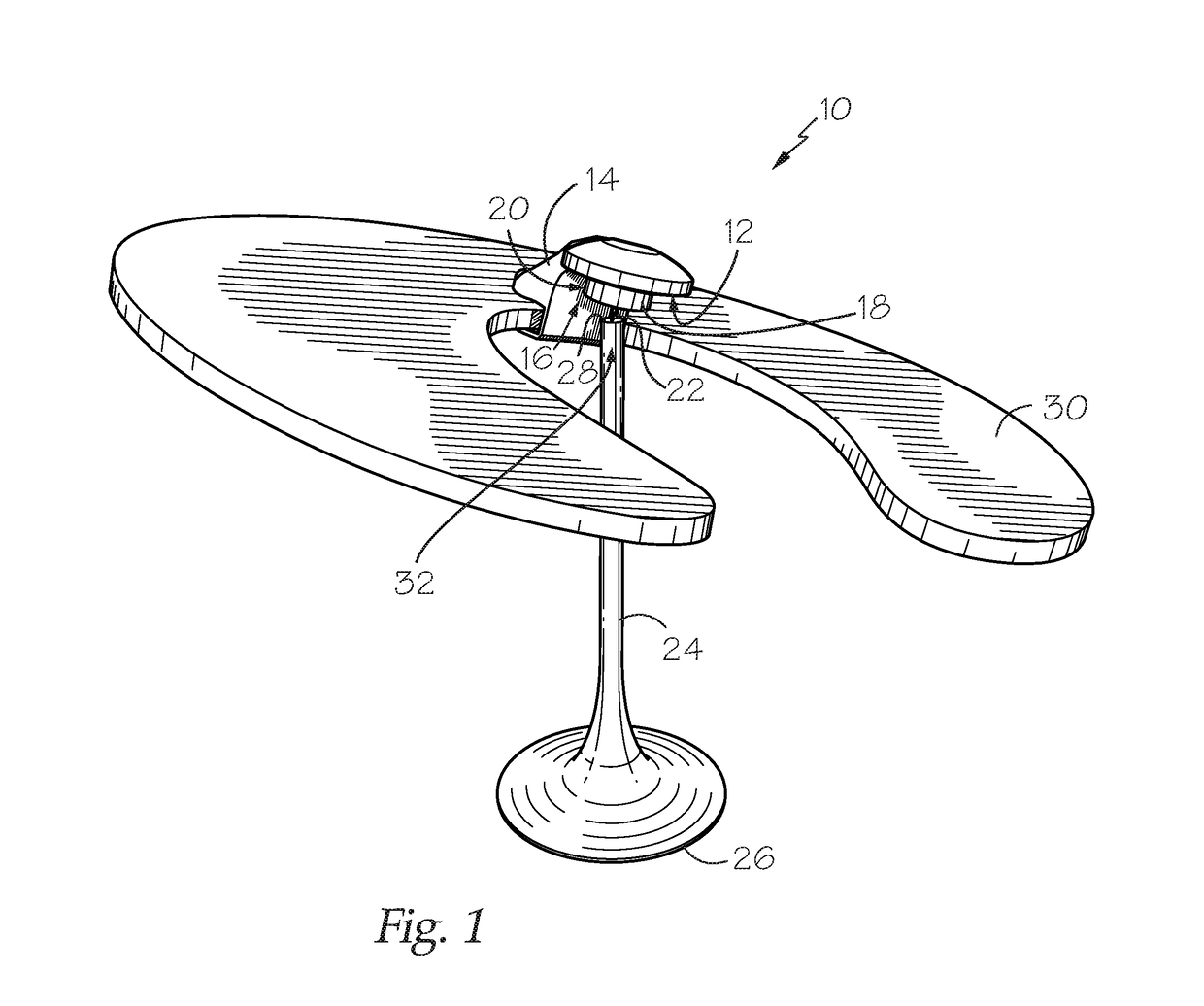Angularly Adjustable Balancing Device
a balancing device and adjustable technology, applied in the field of balancing devices, can solve the problems of not allowing the balancing of stationary items, reducing the utility and entertainment value of such efforts, and not also allowing the user to choose various objects
- Summary
- Abstract
- Description
- Claims
- Application Information
AI Technical Summary
Benefits of technology
Problems solved by technology
Method used
Image
Examples
first embodiment
of the Method of Use
[0028]In a first embodiment, a method of utilizing a balancing device 10 includes a user selecting an object 30 to be balanced. Objects 30 may include one of a number of articles, including—but not limited to—a shaped flat sheet, dish, or even a bottle. Once selected, a user may then affix the ferrous metal plate 12 to the object 30 so the ferrous metal plate 12 is disposed near a point vertically in line with the object's center of gravity 32. For example, if a user selected a U-shaped board 30—as in FIG. 1—the user may clamp 14 the ferrous metal plate 12 to the board 30 so that the plate 12 is located between the legs and base of the board 30, at a point corresponding to the center of gravity 32 of the board 30.
[0029]Once the ferrous metal plate 12 is affixed to the object 30, the user may then attach the balance member 16, through its magnet 20, to a point on the surface of the ferrous metal plate 12. Upon attaching the balance member 16, the user may then pla...
PUM
 Login to View More
Login to View More Abstract
Description
Claims
Application Information
 Login to View More
Login to View More - R&D
- Intellectual Property
- Life Sciences
- Materials
- Tech Scout
- Unparalleled Data Quality
- Higher Quality Content
- 60% Fewer Hallucinations
Browse by: Latest US Patents, China's latest patents, Technical Efficacy Thesaurus, Application Domain, Technology Topic, Popular Technical Reports.
© 2025 PatSnap. All rights reserved.Legal|Privacy policy|Modern Slavery Act Transparency Statement|Sitemap|About US| Contact US: help@patsnap.com



